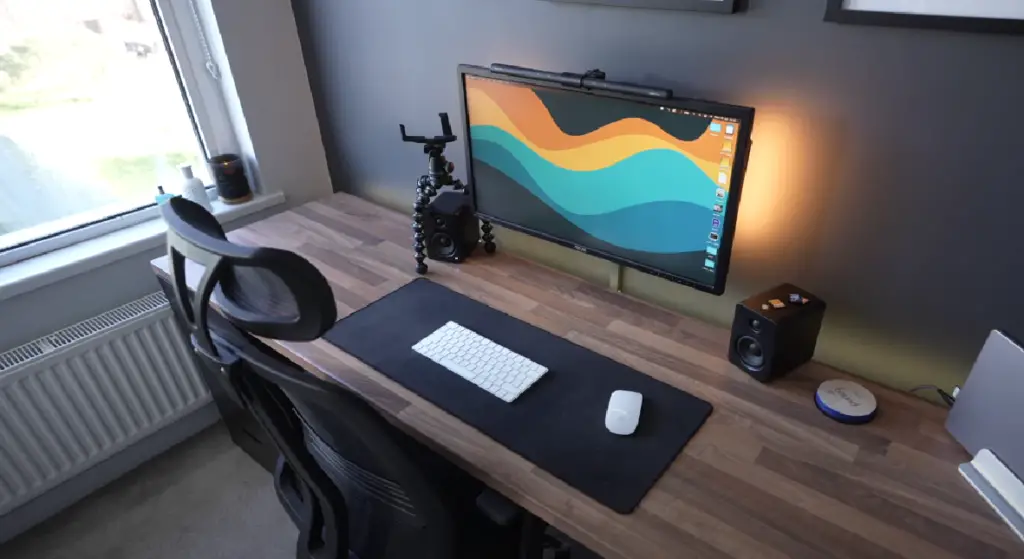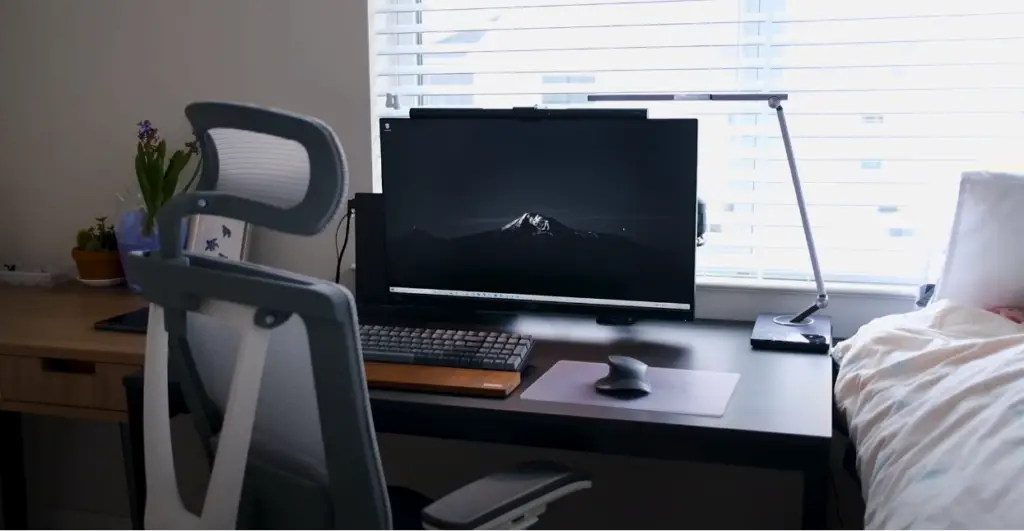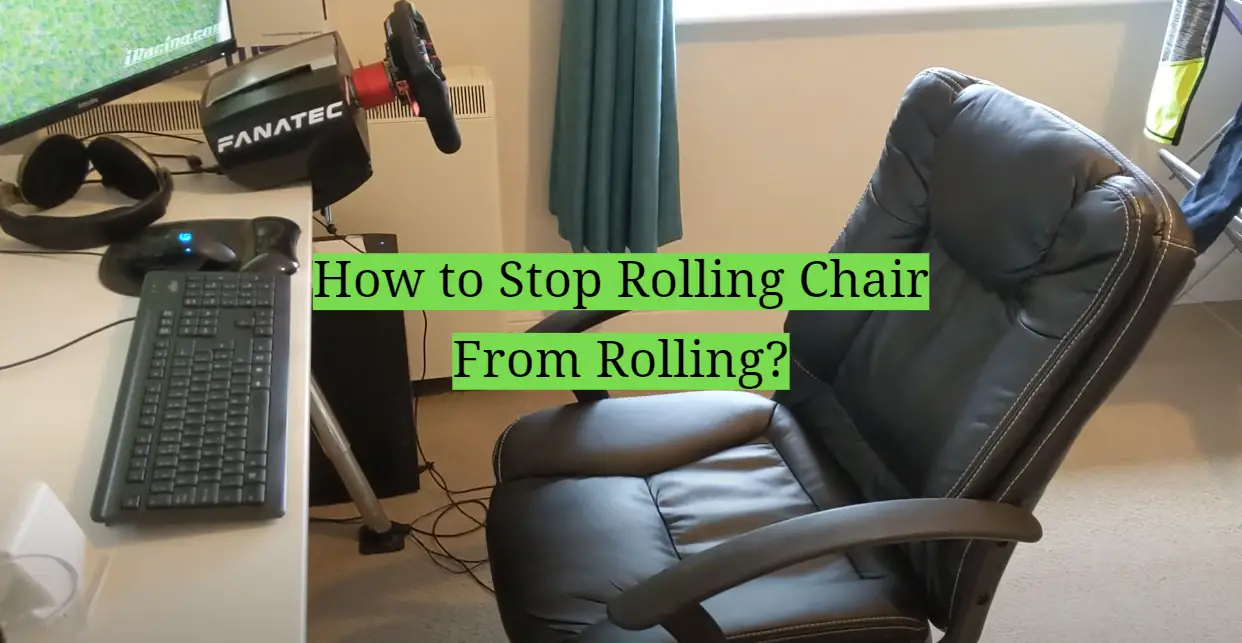A rolling office chair can be a practical choice for many, providing ease of movement and convenience. However, sometimes this very feature can turn into a cause of annoyance or even safety concerns, especially if the chair rolls around uncontrollably. Understanding how to stop your chair from rolling can be beneficial, eliminating disruptions during your work or study time and preventing any potential mishaps. In this guide, we will provide some effective methods to keep your rolling chair stationary when needed.
What is a rolling chair?
A rolling chair, often referred to as a caster chair or office chair, is a type of chair that is typically used in a professional or home office setting. It is designed with wheels (or casters) at the base, allowing for easy and swift movement across the floor. This maneuverability can provide a great deal of convenience, particularly in workspaces where the user needs to move between different areas or reach various items without needing to stand up. Rolling chairs also commonly feature adjustable height and back support, catering to the comfort of the user. However, without control, these chairs may roll when unwanted, and it’s this issue we aim to address in this guide.

Why are rolling chairs good?
Rolling chairs offer numerous advantages that contribute to their popularity in workplaces and homes. Firstly, they provide ease of movement without the need to get up, enhancing efficiency, particularly in spaces where multiple work areas are within a short distance.
Lastly, they are versatile and come in a variety of designs, materials, and colors, making them a stylish addition to any space. However, it’s important to keep in mind that as with any chair, the user’s comfort should be the priority, and features such as adjustable armrests, lumbar support, and cushioned seating can greatly enhance the user experience.

Overall, rolling chairs provide both convenience and comfort making them an invaluable asset in any workspace. With the right care and maintenance, they can last for years while continuing to bring comfort and productivity to your work life. [1]
Why are Chairs Rolling?
There are a few reasons why chairs may roll. Primarily, the wheels or casters at the base of the chair are designed to move smoothly across surfaces to ensure easy mobility for the user. This feature allows you to move around your workspace with relative ease, promoting efficiency and productivity. However, several factors can cause the chair to roll uncontrollably. These include the type of flooring in your workspace, the weight distribution on the chair, and the condition of the chair’s casters. The smoother and harder the flooring, the more likely your chair is to roll. Similarly, if most of your weight is shifted to one side of the chair, it may cause the chair to move in that direction. Lastly, if the chair’s casters are worn out or damaged, it might result in unpredictable movement. Understanding these causes can help in adopting effective measures to control the unwanted rolling of the chair.

Why does my chair rotate?
Your chair may rotate due to the swivel design that most office chairs incorporate. This feature allows you to rotate your chair in different directions without moving its base. It is particularly useful in an office setting where you might need to turn around frequently to access different parts of your workspace. However, if the chair is spinning uncontrollably, it could be due to a loose or worn-out swivel mechanism.

It’s important to regularly check and maintain these parts to ensure the chair functions as intended.
Why is my chair not stable?
Your chair may not be stable for a variety of reasons. In most cases, instability is caused by uneven or damaged wheels, where one or more casters are not functioning properly, causing wobbling or tilting. Another common issue is wear and tear on the chair’s structure over time, including loosening of the screws or bolts that hold the chair together. If the chair’s pneumatic cylinder, which is responsible for maintaining the chair’s height and balance, is damaged or leaking, it could also lead to instability. Moreover, uneven surfaces or flooring could also cause the chair to be unstable.
How to Stop Rolling Chair From Rolling?
Fortunately, there are a few ways you can stop your chair from rolling. The first is to use a locking mechanism on the wheels of the chair. Many office chairs come with this feature already installed, allowing you to control and restrict the movement of the wheels as needed. You can also invest in wheel stoppers or a caster brake to keep the chair stationary. These are usually easy to install and can be manually activated when needed. If not, you can always place some heavy objects on either side of the wheels, creating enough resistance so that the chair will no longer roll. There are a variety of options available to help you maintain control over your rolling chair and stop it from moving when unwanted. [2]

How to Prevent an Office Chair from Rolling?
There are multiple techniques available to stop an office chair from rolling. This includes:
Using Chair Mats: One simple method is to use a chair mat under your rolling chair. A textured or spiked mat can prevent the chair from rolling by creating friction.
Investing in Locking Casters: Some chairs come equipped with locking casters. A simple switch or lever on the caster can be flipped when you want the chair to stay stationary. If your chair doesn’t have these, you can purchase and install them separately.

Using Caster Cups: Caster cups are small bowls or cups that the wheels of your chair can rest in. They essentially act as small docking stations for your chair’s wheels, preventing them from moving around.
Installing Wheel Chocks: Wheel chocks are wedges that can be placed in front of the wheels to prevent your chair from moving. They’re easy to place and remove as needed.
Replacing Casters with Stationary Feet: If you find that you rarely need to move your chair around on its wheels, you can replace the casters with stationary feet.
Remember to choose the method that best suits your needs, considering factors like your floor type, the need for mobility, and your chair model.
FAQ
Can you lock a rolling chair?
Yes, you can lock a rolling chair. Most models of office chairs come with a built-in locking mechanism that allows the wheels to be locked into place, preventing the chair from rolling. This feature is usually operated by a simple lever or switch found on each wheel. If your chair does not come with this feature, there are aftermarket locking casters available that can be fitted onto your chair. These locking casters not only stop your chair from rolling but also provide the flexibility to unlock when needed. Always remember to ensure that the lock is properly engaged to prevent unintentional movement.
How does a swivel lock work?
A swivel lock works by restricting the rotation of the swivel wheel, effectively locking it in place. This is typically achieved through a mechanism that pushes a small metal or plastic component into a groove or against the wheel’s swivel bearing, preventing it from turning. The lock is usually operated by a lever or button that can be easily reached when sitting on the chair. When the lock is engaged, the chair becomes stationary and stable, unable to swivel. However, when the lock is disengaged, the chair can freely rotate again, offering the user flexibility and mobility in their workspace. Regular maintenance and checking of the swivel lock’s condition can ensure its effective operation and prolong its lifespan.[3]
How do you lock a chair in place?
Locking a chair in place depends largely on the type of chair and the features it comes with. If your chair has wheels with locking casters, you can simply flip the switch or lever on each wheel to lock them in place, stopping your chair from rolling. If you have a swivel chair, look for a swivel lock or a tension knob which can be tightened to restrict rotation. Some chairs also have a tilt lock mechanism that can be engaged to prevent the chair from tilting backward. If your chair doesn’t come with these features, you can alternatively place a non-slip mat underneath the chair or use caster cups to hold the wheels in place. Wheel chocks or heavy objects placed in front of the wheels can also prevent movement. For a permanent solution, consider replacing the casters with stationary feet. Always remember to periodically check the condition of these locking mechanisms to ensure they’re functioning properly and are safe to use.
What are the ways to prevent a chair from sinking?
An office chair might sink due to a malfunctioning pneumatic cylinder, which controls the chair’s height. Here are some ways to prevent your chair from sinking:
Check and Adjust the Pneumatic Lift: The pneumatic lift mechanism on your chair could be failing due to wear and tear. Regularly check it for damage and adjust the knob or lever to correct the chair’s height.
Make Use of a Hose Clamp: A hose clamp can help to secure the chair’s height. Attach it around the cylinder and tighten it accordingly so that the chair no longer lowers from your preferred height.
Use a PVC Pipe: If a hose clamp doesn’t work, you can use a cut-to-size PVC pipe around the cylinder. The pipe should fit snuggly and prevent the chair from sinking.
Replace the Gas Cylinder: If the above solutions don’t work, you might need to replace the gas cylinder. It’s a more complex solution and might require professional help, but it’s the surest way of fixing a sinking chair.
Invest in a Chair Cylinder Replacement Kit: These kits come with everything you need to replace the cylinder, including detailed instructions.
Remember, if your chair continues to sink, it might be a sign of larger structural issues and it might be time to replace it with a new one.
What is a chair with wheels called?
A chair with wheels is commonly referred to as a “caster chair” or “rolling chair.” The term “caster” refers to the wheeled device typically found on the bottom of the chair, allowing it to move smoothly across different surfaces. These chairs are most often used in settings like offices or desk spaces where mobility can improve efficiency and comfort. It’s worth noting that there are several different types of caster chairs, including task chairs, executive chairs, and even specific models designed for gaming or drafting. Each of these types is designed with a specific use in mind, but they all share the common feature of wheels for easy movement.
Whether you’re looking for an ergonomic office chair or a comfortable gaming chair, make sure to invest in quality casters for the best experience. High-quality caster wheels are designed to last longer and provide smoother movement on various surfaces. As with any other type of furniture, investing in a well-made rolling chair can make all the difference when it comes to comfort and productivity. [4]
How can you protect your floor from chair casters?
There are a few different ways to protect your floor from chair casters, depending on the type of surface you have. For hardwood floors, use caster cups or non-slip mats beneath the wheels to ensure a smooth gliding motion while protecting the floor from scratches and dents. If your floor is carpeted, look for caster wheels that are designed specifically for this surface to prevent snagging or damage. You can also use wheel chocks in front of the chair’s casters to help keep it from rolling away on you or damaging your floor.
Finally, if you’re looking for a more permanent solution, consider replacing the casters with stationary feet. You can also replace your existing caster wheels with soft-treaded ones, which are designed to reduce floor scratch and noise while still allowing for easy movement. Regardless of what option you choose, remember to regularly check the condition of these protectors or locks to ensure they’re functioning properly and are safe to use.
What is a rotating chair called?
A rotating chair is typically referred to as a “swivel chair”. This type of chair features a single central leg that allows the seat to rotate 360 degrees horizontally. Swivel chairs are often used in offices due to their ability to easily pivot between different work areas without the need to physically move the chair. They are also popular in living spaces where they promote casual conversation, as they can be rotated to face different parts of the room. Some swivel chairs also have additional features such as tilt tension and a locking mechanism for added flexibility and comfort. With its versatility and convenience, it’s no wonder why the swivel chair is a common choice for homes and offices alike.
What are alternate solutions to replace a damaged gas cylinder in a rolling chair?
If your gas cylinder is damaged and needs to be replaced, there are several alternative solutions you can try. One option is to use a heavy-duty rubber band or bungee cord around the base of the cylinder to keep it in place. Another is to use a hose clamp attached to the frame at the bottom of the chair, which should hold it securely in position. You can also try using a cut-to-size PVC pipe around the cylinder for a snug fit that will help prevent it from sinking. Additionally, you can invest in an alternate cylinder replacement kit that comes with everything you need and detailed instructions. With these solutions, you can keep your rolling chair working properly and restore its comfort and convenience.
What are the different components of a caster wheel?
Caster wheels typically have four main components: the swivel frame, ball bearings, the wheel, and the stem. The swivel frame is what allows the caster to rotate and move in different directions, while ball bearings allow for smooth operation by reducing friction between moving parts. The wheel is composed of a polyurethane or rubber tire mounted on a metal core that provides durability and stability. Finally, the stem connects the wheel to the base of the chair and is secured using a nut or bolt. By understanding these components, you can easily identify any issues with your casters and determine the most appropriate replacement parts. [6]
What are the benefits of having an adjustable armrest in a rolling chair?
The main benefit of having an adjustable armrest in a rolling chair is improved ergonomics. An adjustable armrest allows you to customize the chair to fit your specific body shape and posture, creating a more comfortable sitting experience. It also helps reduce strain on the arms by providing support when typing or using a mouse for long periods of time. Additionally, having an adjustable armrest in place can help keep your shoulders properly aligned while avoiding common issues such as carpal tunnel syndrome. With all these benefits, it’s easy to see why adjustable armrests have become a popular feature in modern rolling chairs.
How does chair height adjustment work?
Chair height adjustment typically works through a mechanism known as a gas lift, which is powered by a compressed gas cylinder. When you pull or push the adjustment lever (usually located on the underside of the seat), it triggers the gas lift mechanism. The gas pressure within the cylinder either pushes the seat upward (if you’re lifting your weight off the seat) or allows the seat to descend (if you’re adding weight to the seat). This provides a smooth and easy method of adjusting the chair’s height to best suit the user’s needs. It’s important to regularly check the gas lift mechanism to ensure it’s functioning properly, as it can wear out over time. Regular maintenance and, if necessary, timely replacement of the gas cylinder can help ensure the longevity of your adjustable chair.
With the right information and tools, it’s easy to keep your rolling chair in perfect condition. Knowing how to stop a rolling chair from moving, protect your floor from casters, and adjust the seat height for comfortable use are all important steps in proper chair maintenance.
Is it better to have the chair lower or higher?
The ideal chair height largely depends on the user’s body structure and the nature of their work. Generally, the chair should be adjusted so that the user’s feet are flat on the ground, knees are at a 90-degree angle, and their hips are level with, or slightly higher than, their knees – this promotes better posture and reduces strain on the lower back. A chair that’s too high can cause you to dangle your feet, leading to circulation issues, while a chair that’s too low can cause an unnatural bend in the knees, leading to discomfort or pain over time. Ultimately, the goal is to achieve a comfortable and ergonomic position that enables you to carry out your tasks without physical discomfort. Regular adjustments may be necessary to maintain an optimal posture as your body and work habits change.[5]
Useful Video: Sim Racing – Keep your chair still without a rig
Conclusion
In conclusion, rolling chairs are not just a comfortable seating option but also an ergonomic solution that promotes efficiency and productivity in various settings, such as offices and homes. The ease of movement offered by their caster wheels and the adjustable features like armrests and swivel function caters to individual comfort and body posture needs. However, to prolong the life and functionality of these chairs, it’s crucial to maintain the proper condition of the components, especially the caster wheels. Regular checks and timely replacements can prevent floor damage and the chair from becoming unstable. With the right care and attention, your rolling chair can continue to provide you with a comfortable and productive work or relaxation environment for years to come.
References:
- https://www.duhome.com/blogs/be-a-pro/how-to-stop-office-desk-chair-from-rolling-7-easy-tips
- https://www.autonomous.ai/ourblog/how-to-fix-a-wobbly-office-chair
- https://www.halfhalftravel.com/remote-work/stop-rolling-chair.html
- https://chairtalks.com/how-to-keep-the-office-chair-from-rolling/
- https://suggesthow.com/how-to-stop-office-chair-from-rolling/
- https://fittingchairs.com/how-to/how-to-stop-office-chair-from-rolling/














Leave a Reply